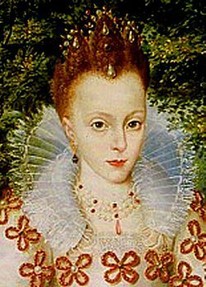 Like all royal children of her time, we know that she was highly educated. Even at nine years old, she was expected to be able to hold her own in a debate. No tantrum nor short cuts, the points and responses had to be rational and supported by evidence.
Like all royal children of her time, we know that she was highly educated. Even at nine years old, she was expected to be able to hold her own in a debate. No tantrum nor short cuts, the points and responses had to be rational and supported by evidence.
Princess Elizabeth was fluent in, at least, English and French by the age of nine. She probably had knowledge of Latin and Greek too.
She was also trained in the art of courtly manners and etiquette. This we can be certain was true of Princess Elizabeth, as a record of an official visit to Coventry has survived.
On April 13th 1604, when Elizabeth was seven, she was formally presented to the city. The Princess was met, on the outskirts, by an honor guard of Coventry's prominent male dignitaries. They flanked her horse and escorted her into the city center. There she sat through a parade (practically mobbed by commoners), a church service, speeches and a formal banquet.
Throughout all of it, she did not fidget, nor did she once present herself as anything other than a royal princess. Her mature grace and self-possession were gleefully recorded. She had acted like a miniature adult.
How many eight year olds of your acquaintance would have taken that in their stride? She even overcame a potentially embarrassing faux pas at the Coventry Civic Banquet. After being seated in the Chair of State, this happened:
Exalted in this high, shallow, and wide oaken chair, little Elizabeth was filling her place with dignity and gracefulness; but an unexpected dilemma arose. The cup in which she was to return the civic pledge was a ponderous and massy one of silver, and her little hand failing to move it, she applied both, and yet unable to raise and guide it to her lip, she turned with a smile, to which her lively disposition and conception of the ridiculous lent something of a comic expression, towards her watchful governor ; who instantly coming to her aid, with grave dignity assisted in raising the cup to her still smiling lips.
Coombe Abbey: An Historical Tale of the Reign of James I by Selina Bunbury
Sir John Harrington helped her lift the silver cup and all mortified dignitaries breathed a sigh of relief. Note that he couldn't intervene, as any ordinary parent or guardian would, until she had indicated that he should. She outranked him. Such are the perils of high office.
Though so young, rank meant a lot in those circles. Princess Elizabeth outranked everyone in that household. If she gave an order, technically it had to be obeyed. She was taught from infancy how to command a stately home, with all its estate management, servants, visitors and guests.
Naturally, she would have had a great deal of assistance in this, due to her youth. But this, and her education, was largely the point of her being sent to Coombe Abbey. It was to prepare her for one day being married to a high-ranking man, probably becoming queen of a nation in the process.
Along with this growing power and responsibility, Princess Elizabeth had the ability to confer favors; and to learn the importance and politics of the same. Making friends wasn't a simple matter of talking to likely looking children in the playground. She had to learn, hard and fast, to evaluate each potential alliance. She had to work out what that person might gain or want from a friendship.
Fortunately for Princess Elizabeth, the Harringtons had been chosen precisely because they weren't known for their political manoeuvrings at court. Those visitors with access to the little girl had already been carefully vetted or were members of the Baron's family. Accordingly, her best friend while growing up was Anne Dudley, a young niece of Sir John Harrington.
As for the young Stuart princess's intelligence, it seems roughly average. She was diligent and extremely well educated, but without anything which denotes actual genius at this age. That would come later, when she was Queen of Bohemia and fighting for her family's rule as the Electress of Palatine.


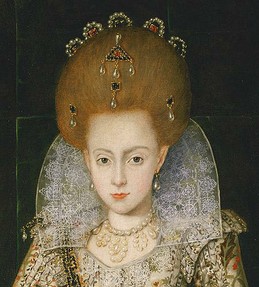 The plan was simple, but it didn't succeed. After Guy Fawkes had blown up the House of Lords, and killed the entire government and its king, there would be a Catholic Uprising.
The plan was simple, but it didn't succeed. After Guy Fawkes had blown up the House of Lords, and killed the entire government and its king, there would be a Catholic Uprising.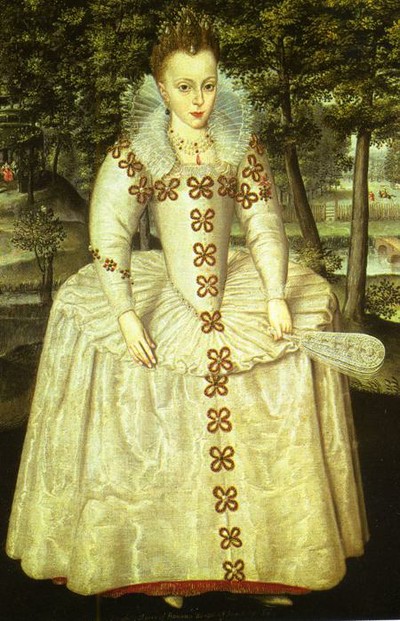







 Like all royal children of her time, we know that she was highly educated. Even at nine years old, she was expected to be able to hold her own in a debate. No tantrum nor short cuts, the points and responses had to be rational and supported by evidence.
Like all royal children of her time, we know that she was highly educated. Even at nine years old, she was expected to be able to hold her own in a debate. No tantrum nor short cuts, the points and responses had to be rational and supported by evidence.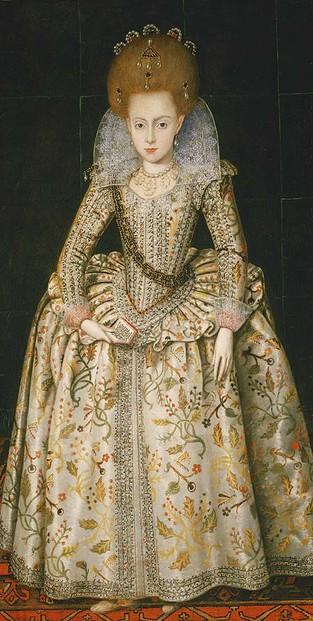


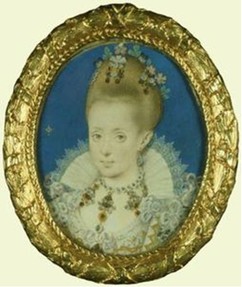 It's difficult to grasp much about the character of a girl who lived five hundred years ago. But some insights have survived.
It's difficult to grasp much about the character of a girl who lived five hundred years ago. But some insights have survived.


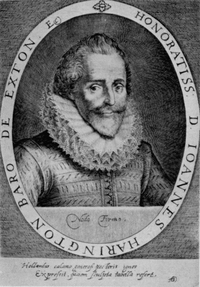 When Guy Fawkes was arrested in Westminster, with thirty-six barrels of gunpowder in his possession under the House of Lords, the new wasn't instantly known in Warwickshire. It wasn't like anyone could pick up a telephone or send an e-mail.
When Guy Fawkes was arrested in Westminster, with thirty-six barrels of gunpowder in his possession under the House of Lords, the new wasn't instantly known in Warwickshire. It wasn't like anyone could pick up a telephone or send an e-mail.





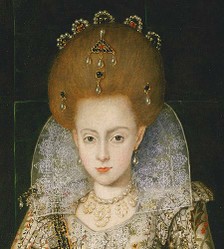

 St Tydecho's Churches in West Waleson 09/03/2014
St Tydecho's Churches in West Waleson 09/03/2014
 Goodies for an Outlander Premiere Partyon 03/06/2015
Goodies for an Outlander Premiere Partyon 03/06/2015
 Holocaust Memorial Day Interview with Rainer Höss, Grandson of Rudolf Architect of Auschwitzon 01/24/2015
Holocaust Memorial Day Interview with Rainer Höss, Grandson of Rudolf Architect of Auschwitzon 01/24/2015
 Romantic Valentine Gifts for an Outlander Fanon 01/16/2015
Romantic Valentine Gifts for an Outlander Fanon 01/16/2015

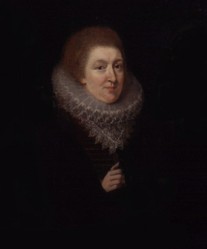
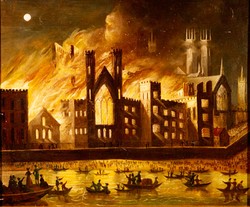
Comments
LOL I love that it's a bandwagon. It's been rocking on for over 500 years here! At what point does it stop being a bandwagon and start being a party?
Glad to have inserted the jigsaw pieces for you; and yes, I did finally track her down to Westminster.
Haha, yes it was a good coincidence! She had a friend who told her to enjoy the movie but to not get on 'that stupid remember the 5th of November bandwagon,'...... >.> Maybe he'll read the links too! .-.
It was worth the rant I received before, especially after reading it and bits of the rant make a lot more sense now. xD
I love the coincidence there! And yes, she should watch the movie! It's wonderful. \o/
I'm glad that you liked this article and the Guy Fawkes one. Was it worth the ranting that you had to endure before?
Yay! Wonderful article :) I had to go and read the Guy Fawkes one and then came back and read this one.
Ironically, in between the two, my friend announced that she was going to watch V for Vendetta for the first time, and so I went to comment and link her to your article, because it was interesting. \o/
It's possibly because Elizabeth of Bohemia would have been Elizabeth II. The lady that you are discussing would be Elizabeth III, if she'd ever come to the throne at all.
Elizabeth Stuart was the matriarch of the Georgians/Hanoverians, so if she never made it abroad, we wouldn't have had them.
I agree that the 1998 Elizabeth was a great film.
This made me think of the Queen, off base I know but it did. I adore Queen Elizabeth there has always been something about her so inspiring and intriguing, she was a woman before her time, a heroine if you will, IMHO There are so fab films out about her on Amazon. Elizabeth (Spotlight Series) (1998) is my fave! Just Saying :)K
You're very welcome. I enjoy writing about it!
I love the history. Thanks!